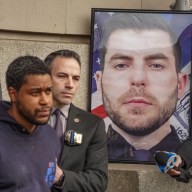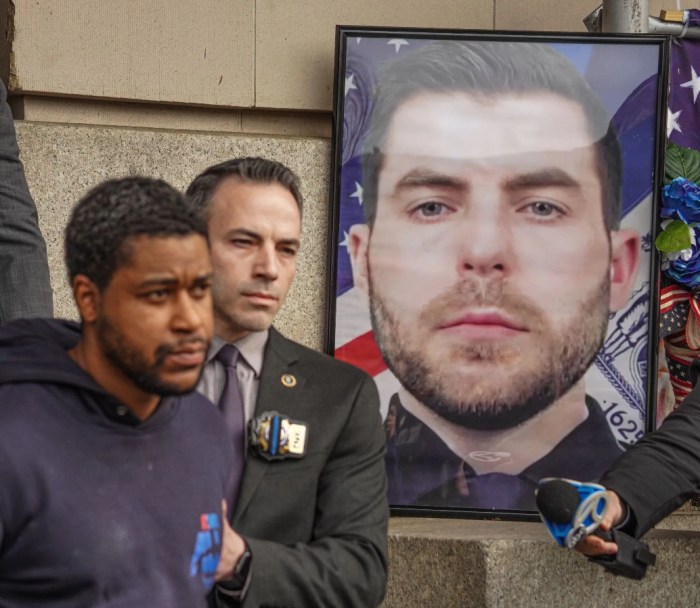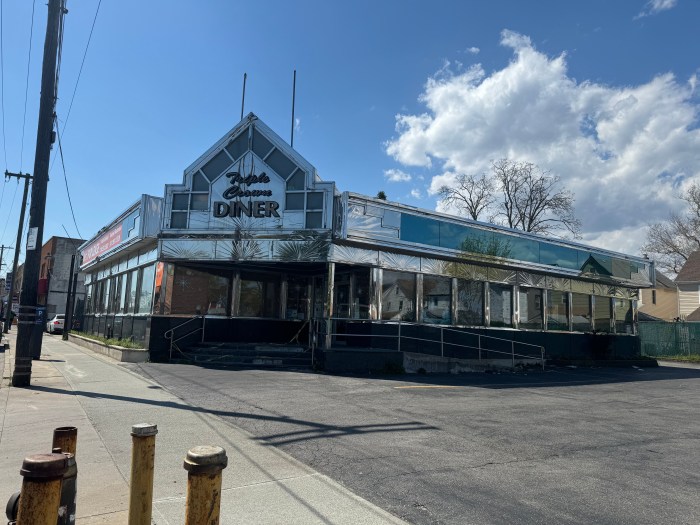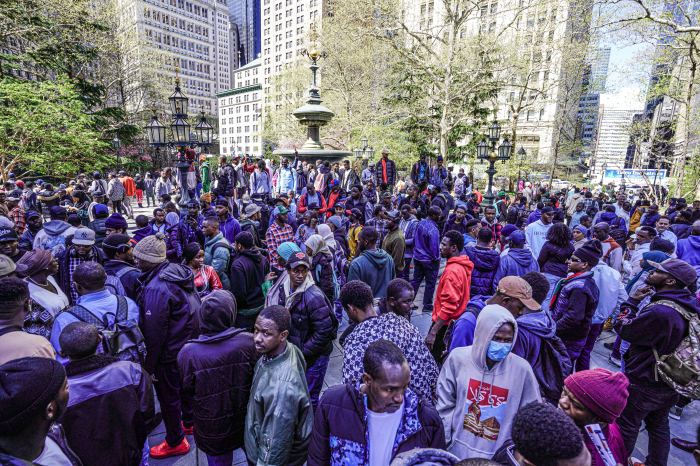By Arlene McKanic
On the snowy afternoon of Jan. 29, Ellen Poulsen, author of “Don’t Call Us Molls” (Clinton Cook Pub.) came to the Woodhaven Historical Society and gave a slide show lecture “Crime Does Not Pay,” that extolled the vices of the original gangsters.
We’re not talking about your average thug or even your John Gotti types, but the real, classic, bona fide mobsters who came to prominence during the Depression, like John Dillinger, Baby Face Nelson, and others. Also important to the show were their wives and girlfriends, who were known, to their displeasure, as “molls,” an Americanization of the word “molly,” English slang for a woman pickpocket or prostitute.
The turnout was good for such an inclement day, and I sat down at a table with a bunch of lovely women who listened attentively in the auditorium. “Are you sure you don’t want another piece of cheesecake, dear?” they fussed when coffee and cake were served later. “Oh, have another! Go ahead!”
The lecture began with a bit of music from the 1930’s to set the mood.
Poulsen’s first slide was of Bonnie and Clyde, who aren’t nearly as attractive as Faye Dunaway or Warren Beatty who played them in the movie. The rail-thin Bonnie fancied herself a poet; she wasn’t.
That slide was followed by a shot of Opal Long, Patricia Cherrington and Jean Burke, three of meanest looking women you’ve ever seen, who were part of John Dillinger’s gang. Dillinger was famously rubbed out by the FBI in 1934 at the Biograph Theater in Chicago, in the company of the Woman in Red — who was from Romania and was later deported — and Dillinger’s “French-Indian sweetheart,” the sophisticated Evelyn Frechette. The box office that sold him his last ticket is still there.
After Dillinger’s death a bunch of medical students made a mask of his face, perhaps to study the criminal lumps in the head. You can see it now in the FBI building.
Another slide showed a smiling Dillinger cradling his ammunition, including the wooden gun he used to escape from the escape-proof jail. The sheriff at that jail, Lillian Holley, was a woman, and people liked to blame her gender as the reason for Dillinger’s escape. Later, a couple of his compatriots escaped the death house by carving a gun out of soap. Of all the mobsters who were nabbed, only Harry Pierpont was executed. Poulsen showed a slide of him lying in his casket, mourned by his girlfriend, Mary Kinder.
“There are 38,000 pages of paperwork on all this stuff,” said Poulsen, who had to go through a lot of it to research her absorbing book.
The Ford V-8 was the gangsters’ ride of choice back in the day, she went on, mostly because it had a running board to which hostages were affixed. The Feds also liked the car because of the running board, and though in the movies it looks huge and roomy —the SUV of its day —inside it was small and cramped and the doors opened the wrong way.
The women who ran with Dillinger and his thugs were thought of as disreputable, but they were mostly factory workers or domestics, and the slides showed that — with the exception of the well-groomed Frechette — most had that worn out, Depression era, Dorothea Lange look about them, and their clothes were ill-fitting and tacky.
There’s the tragic story of Ma Barker, who did nothing wrong, really, but shelter her rotten sons. When she was killed along with one of her boys in an ambush, the Feds had to besmirch her image to justify themselves. On the other hand, there was pudgy Pearl Elliot, the proprietress of a “disorderly house,” as it was called then, who threatened to get in shape and whip members of the Indianapolis police force. She looked like she would have, too.
Some of the women, of course, ratted, and the ones who testified willingly were sent to a nice bucolic prison. The ones who didn’t were sent to a lock up. At their trials their attorneys made sure they were dressed in Peter Pan collars to make them look innocent — Poulsen showed a slide of Evelyn Frechette in one of these get-ups. She looked like a corrupted schoolgirl. Later, after she served light time, Frechette went on a “crime does not pay” tour, then moved back to the Menominee reservation and got married.
“I’ve had a hell of a life,” she told her husband. Indeed.
Poulsen became interested in these citizens because her father was a police officer in Brownsville and there was a lot of police paraphernalia in her home, including wanted posters. “So it became a natural interest,” she said.
As for the gangsters of the modern era, like the late, great Teflon Don, Poulsen said that it’s the general belief that they’re “not of the caliber of the old guys. But what criteria they’re using, I really can’t say.”
































